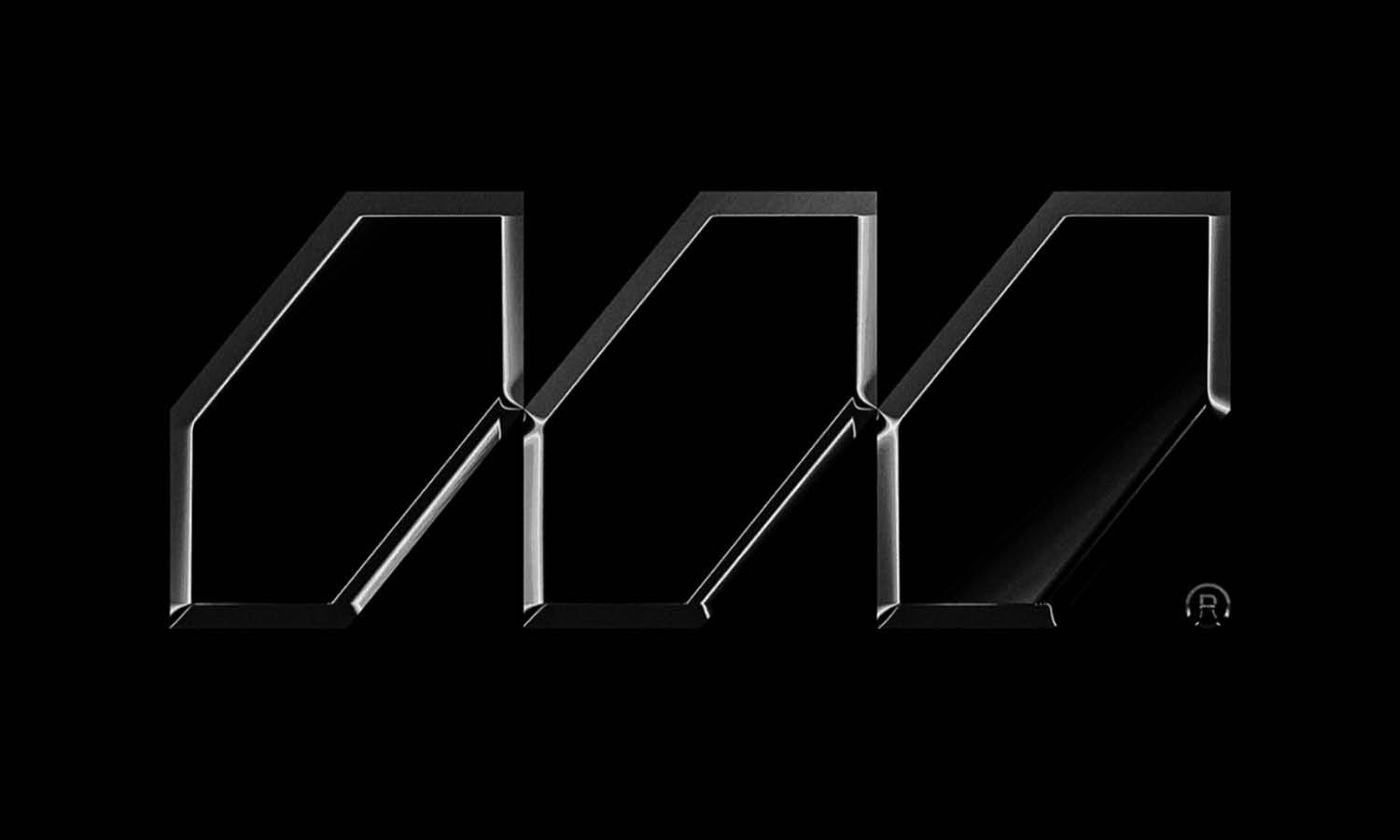Is It Legal To Recreate A Logo Design

Source: Studio Nari, Rarekind Limited Edition, Behance, https://www.behance.net/gallery/95681137/Rarekind-Limited-Edition
Logos are a fundamental part of a brand’s identity, serving as visual representations of businesses, organizations, and products. However, the question of whether it is legal to recreate a logo design is a complex issue that falls under intellectual property laws. Many designers and business owners may wonder if modifying, redrawing, or reusing an existing logo is permissible, but the answer depends on factors such as copyright, trademark protections, and usage rights.
A logo design is typically protected under copyright law as an original artistic work and may also be registered as a trademark to safeguard a brand’s reputation. Recreating a logo without permission, even with slight modifications, can lead to legal disputes if it infringes on the rights of the original creator or company. While some circumstances may allow limited use, such as parody or educational purposes, most commercial reproductions require proper authorization.
Understanding the legal implications of recreating a logo design is crucial for designers, business owners, and marketers. This article will explore the key legal aspects of logo recreation, helping you navigate copyright laws, trademark rights, and ethical considerations when working with brand visuals.
Logos Are Protected by Copyright
Copyright law safeguards original creative works, including logo design, granting exclusive rights to the creator. When a designer creates a logo, it is automatically protected under copyright, meaning others cannot legally recreate or reproduce it without permission. This protection prevents unauthorized copying, modification, or distribution of the design.
Copyright protection applies to logos that demonstrate originality and creativity. Simple geometric shapes or generic symbols may not qualify for copyright protection, but a unique logo design with distinctive artistic elements is typically covered. If a logo is registered with a copyright office, it further strengthens legal claims against infringement.
Recreating a copyrighted logo without permission can lead to legal consequences, including cease-and-desist orders, monetary fines, or lawsuits. Even if a logo design is altered slightly, it may still be considered derivative work and subject to copyright infringement. Designers and businesses should seek proper authorization before attempting to recreate a logo, especially if it belongs to a well-established brand.
To legally use an existing logo, one must obtain written permission from the original creator or rights holder. If a logo design is needed for branding purposes, the safest approach is to create an entirely original design that does not imitate or copy existing logos. Understanding copyright laws ensures that designers and businesses respect intellectual property rights while avoiding legal risks associated with logo recreation.
Trademark Laws Protect Business Identity
A logo design is more than just an artistic creation; it serves as a trademark that represents a company’s brand identity. Trademarks are legally protected symbols, words, or designs that distinguish a business from competitors. When a company registers its logo as a trademark, it gains exclusive rights to use that design in commerce, preventing others from recreating or imitating it for similar products or services.
Trademark law ensures that customers can identify and trust a brand through its logo design. Unauthorized attempts to recreate a trademarked logo can result in legal action if they cause consumer confusion. Even if minor changes are made, if the recreated logo is too similar to the original, it may be considered trademark infringement.
Unlike copyright, which protects the artistic expression of a design, trademark law focuses on preventing brand confusion and protecting a business’s reputation. Trademark protection can last indefinitely as long as it remains in active use and is renewed periodically. This means that even after a company stops using a particular logo design, it may still hold rights to it.
Businesses and designers should be cautious when attempting to recreate or modify an existing trademarked logo. The best practice is to develop an entirely unique design that does not resemble existing trademarks. If a company wants to use a similar logo, it must obtain legal permission or acquire licensing rights from the trademark owner. By respecting trademark laws, businesses can build strong, legally protected brand identities while avoiding potential legal disputes.
Alterations May Not Avoid Legal Issues
Many designers believe that making slight changes to an existing logo design can help them avoid legal repercussions. However, even small modifications may still be considered infringement if the recreated logo closely resembles the original. Intellectual property laws, including copyright and trademark protections, aim to prevent unauthorized reproductions that could mislead consumers or dilute a brand’s identity.
A common misconception is that altering colors, fonts, or minor design elements makes a recreated logo legally acceptable. In reality, if the changes are not substantial enough to create a distinctly different design, it may still be classified as derivative work. A derivative work is any modified version of a copyrighted design that retains recognizable elements of the original. Without proper authorization, using a derivative version of a logo design could result in legal action.
Trademark law also plays a crucial role in logo protection. If a recreated logo causes confusion among consumers, even if it is not an exact copy, it may be considered trademark infringement. Courts often assess whether an average person could mistakenly associate the altered logo with the original brand.
To avoid legal risks, designers should create entirely unique logos rather than attempting to modify or recreate existing designs. When working with clients, it is essential to ensure that any redesigns or alterations do not violate intellectual property laws. Consulting legal professionals when in doubt can help designers and businesses steer clear of infringement issues while maintaining ethical design practices.

Source: Nikita Bulanov, Flagman/Clothing Brand, Behance, https://www.behance.net/gallery/167258739/Flagman-Clothing-brand
Permission Is Required for Reproduction
Reproducing or recreating a logo design without explicit permission from the original creator or rights holder is generally illegal. Logos are considered intellectual property, protected under copyright and trademark laws, meaning unauthorized replication can lead to legal consequences. Whether for personal or commercial use, permission is a critical requirement when working with an existing logo.
Companies invest significant resources into building brand recognition, and their logo design plays a key role in this effort. If a third party attempts to recreate a logo without consent, it may be seen as an infringement that damages the brand’s identity. Even if the recreated version is not identical, it can still violate intellectual property laws if it creates confusion among consumers.
To legally reproduce a logo design, designers or businesses must obtain written permission from the rights holder. This process may involve licensing agreements, contracts, or direct approval from the company that owns the logo. Some brands offer guidelines on how their logos can be used, but these typically do not allow complete recreation or redesign.
Failure to obtain permission can result in legal actions such as cease-and-desist letters, financial penalties, or lawsuits. Designers should always verify ownership and seek formal authorization before working with an existing logo. If a brand requires a refreshed identity, the safest approach is to create a new and original design rather than modifying or recreating the existing one without approval.
Fair Use Exceptions Are Limited
Fair use is a legal doctrine that allows the use of copyrighted material under specific conditions, but it provides only limited exceptions when it comes to logo design. Many designers assume they can legally recreate a logo under fair use, but this is often not the case. Fair use is typically applied in contexts such as education, commentary, criticism, news reporting, and parody. However, using a recreated logo for commercial purposes or brand representation rarely qualifies as fair use.
To determine whether fair use applies, courts consider factors such as the purpose of the use, the nature of the copyrighted work, the amount of the original design used, and the effect on the market value. If a logo design is recreated in a way that competes with or diminishes the value of the original brand, it is unlikely to be protected under fair use.
Additionally, fair use does not protect against trademark infringement. Even if a logo design is used for commentary or educational purposes, it may still violate trademark laws if it causes brand confusion. Businesses have the right to protect their brand identity, and unauthorized recreation of their logo can lead to legal action.
Recreating a Logo for Personal Use May Still Be Risky
Many people assume that recreating a logo design for personal use is harmless since it is not intended for commercial gain. However, even personal use can carry legal risks, especially if the recreated logo belongs to a registered trademark. Intellectual property laws protect logos from unauthorized use, regardless of whether the reproduction is for business or private purposes.
A recreated logo may still be considered infringement if it resembles a protected design. For example, using a modified corporate logo for a personal project, fan merchandise, or social media profile could violate copyright or trademark laws. Some companies actively monitor and enforce their brand protections, sending cease-and-desist notices even to individuals using their logos in non-commercial contexts.
Additionally, sharing or distributing a recreated logo online can increase legal exposure. If a personal project gains attention or is mistakenly associated with the original brand, it could lead to claims of brand dilution or misrepresentation. Even if the intention is not to deceive, the legal consequences can be serious.
To avoid risks, individuals should avoid recreating existing logos and instead design something original. If using a specific logo design is necessary, it is best to seek permission from the rights holder. Understanding that trademark and copyright protections extend beyond commercial use can help individuals and designers steer clear of legal trouble while respecting brand ownership.
Copyright Duration Varies by Jurisdiction
Copyright laws protect original logo designs, but the duration of this protection varies depending on the country. In most jurisdictions, copyright protection lasts for the lifetime of the creator plus an additional period—typically 50 to 70 years after their death. During this time, no one can legally recreate or reproduce the logo design without permission from the rights holder.
For corporate-owned logos, copyright duration often follows different rules. Many countries grant protection for a fixed term, usually between 50 and 120 years from the date of creation or first publication. However, if a logo design is also registered as a trademark, its protection can last indefinitely, as long as the trademark is actively renewed and in use.
Because copyright laws differ worldwide, what may be considered legal in one jurisdiction might be an infringement in another. For instance, some countries have stricter enforcement of copyright protections, while others allow for broader exceptions under fair use or public domain laws. Before attempting to recreate a logo, it is crucial to understand the legal framework governing copyright duration in the relevant country.
If a logo design is old enough to have entered the public domain, it may be freely used and modified. However, caution is necessary, as some elements may still be protected under trademark law. Designers should always verify the copyright status of a logo design before using or recreating it to avoid potential legal issues.

Source: Arwa Ramadan, Terracotta, Behance, https://www.behance.net/gallery/135979055/Terracotta
Custom Redesigns Require Distinctiveness
When a company seeks to refresh its logo design, a simple recreation of an existing logo is not enough—it must be sufficiently distinctive to avoid legal conflicts. A redesigned logo should be original, ensuring it does not infringe upon the intellectual property rights of others while still maintaining brand recognition.
Many designers believe that modifying a logo design by changing colors, fonts, or minor details is enough to make it legally unique. However, if the redesign is too similar to the original or another existing logo, it may still violate copyright or trademark laws. Courts often assess whether a redesigned logo creates brand confusion, and if it does, it could be subject to legal challenges.
To be legally sound, a recreated logo must have significant differences that set it apart from any protected designs. This includes creating unique visual elements, original typography, or distinct graphical features that differentiate it from competitors. The goal is to balance brand continuity with originality to ensure the redesign remains legally defensible.
Stock Logos Can Have Usage Restrictions
Stock logos are pre-designed graphics available for purchase or free download from various online platforms. While these resources can be convenient for businesses and designers, they often come with strict usage restrictions. Misunderstanding these limitations can lead to legal issues, especially if someone attempts to recreate or modify a stock logo design without proper licensing.
Most stock logo platforms provide different types of licenses, such as standard and extended licenses. A standard license typically allows for limited commercial use but prohibits exclusive ownership or trademark registration. An extended license may grant broader usage rights but still does not permit users to claim the logo design as their own or resell it.
Recreating or modifying a stock logo design does not necessarily make it original. If the redesigned version retains recognizable elements of the stock logo, it may still be subject to the platform’s usage restrictions. Some stock providers prohibit any modification of their designs, while others allow alterations under specific conditions.
Before using a stock logo design, designers and businesses should carefully review the licensing terms. If the goal is to establish a unique brand identity, it is always better to invest in a custom logo rather than relying on stock graphics. By ensuring legal compliance and avoiding unauthorized recreation, businesses can prevent future disputes and create a brand identity that is truly their own.
Registering a New Logo Prevents Future Conflicts
Registering a logo design as a trademark is one of the most effective ways to prevent legal conflicts and unauthorized recreation. When a company formally registers its logo, it gains exclusive rights to use that design in connection with its products or services. This legal protection helps prevent others from copying, imitating, or misusing the logo for their own branding.
Without trademark registration, businesses risk having their logo design used by competitors or unrelated entities. If a dispute arises over a similar recreated logo, the company with the registered trademark will have a stronger legal claim. Registration provides documented proof of ownership, making it easier to enforce rights in case of infringement.
The process of registering a logo design varies by country, but it generally involves submitting an application to a trademark office, demonstrating the logo’s distinctiveness, and specifying its intended commercial use. Once approved, the trademark can last indefinitely, provided it is actively used and renewed as required by law.
For designers, encouraging clients to register their new logo design adds an extra layer of protection and value. It ensures that their branding efforts are secure from legal disputes and unauthorized recreation. Whether designing for a startup or an established brand, taking the legal step of trademark registration is essential for long-term brand protection and market exclusivity.
Conclusion
Recreating a logo design without proper authorization can lead to serious legal consequences. Logos are protected under copyright and trademark laws, ensuring that businesses maintain exclusive rights to their brand identity. Even slight modifications or personal use of a recreated logo may still violate intellectual property laws. To avoid infringement, designers and businesses should focus on creating original work or obtaining permission when necessary. Understanding the legal implications of recreating a logo design is essential for maintaining ethical design practices and protecting brand integrity. When in doubt, consulting a legal professional can help navigate intellectual property laws effectively.
Let Us Know What You Think!
Every information you read here are written and curated by Kreafolk's team, carefully pieced together with our creative community in mind. Did you enjoy our contents? Leave a comment below and share your thoughts. Cheers to more creative articles and inspirations!
















Leave a Comment